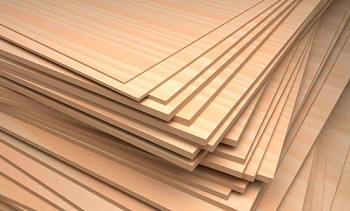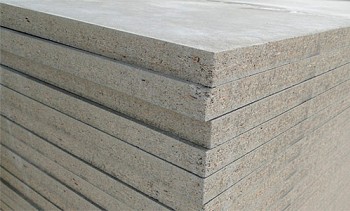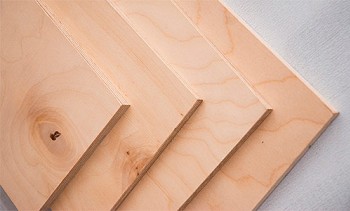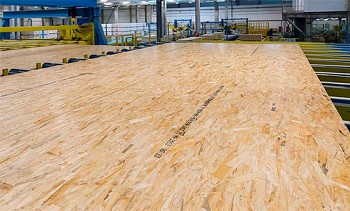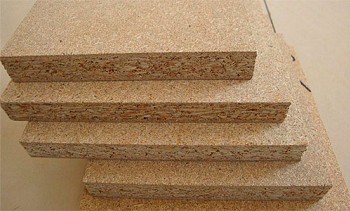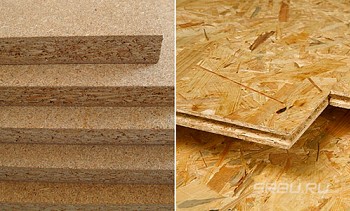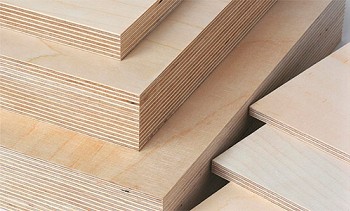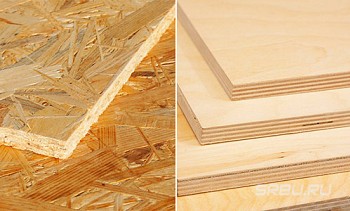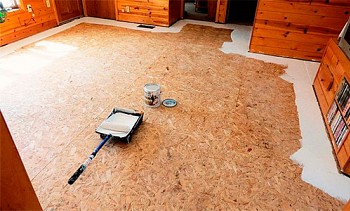Types of OSB boards, their brands and sheet sizes
Oriented particle boards (OSB, OSB, OSB) - a multilayer plate material obtained by pressing wood chips mixed with adhesive. The durability of structures assembled from OSB directly depends on the correct choice of a plate with the desired characteristics. In order to choose the right material that will best cope with the functions assigned to it under certain operating conditions, it is necessary to understand what types of OSB plates are, their brands and scope, as well as what sizes of OSB sheet exist from various manufacturers of this material.
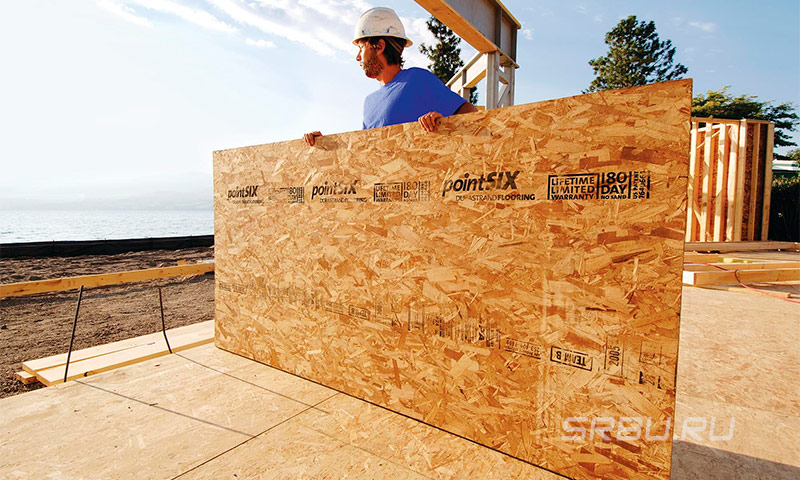
Content:
Classification and brands of OSB boards
Oriented chipboard manufacturers produce their products in accordance with EU or US certification system standards. Those manufacturers who work in the Russian market, for the most part, certify their products in accordance with European standards. There is also Russian GOST R 56309-2014, which regulates the characteristics of the OSB, but it is developed taking into account the European regional standard EN 300: 2006. Therefore, OSB manufactured in accordance with GOST R 56309-2014 and EN 300: 2006 have the same marking.
OSB classification and marks according to European standards
In the EU, key OSB quality criteria are reflected in the following guidelines:
- EN 300. Oriented Chipboard (OSB): Definitions, Classification, and Specifications
- EN 13986. “Wood slabs for construction. Specifications, Conformity Assessment and Labeling »
The most common standard is EN 300. Its criteria include abrasion resistance of the front surfaces, flexural strength of the board, the ability to interact with coatings and the ability to hold fasteners. The fundamental characteristics affecting the class of material is the spatial strength and moisture resistance of the plate.
In accordance with these characteristics, the range of OSB boards is divided into four grades:
- OSB-1. Panels for the construction of unloaded structures and operation in dry conditions.
- OSB-2. Load bearing plates for use in dry environments.
- OSB-3. Universal load bearing panels for use in wet conditions.
- OSB-4. Plates for heavily loaded structures and wet applications.
It should be borne in mind that according to European standards, a dry environment means that the humidity level at a temperature of + 20˚C can only exceed a threshold of 65% for only a few weeks a year. A humid environment is understood to mean that the level of air humidity can exceed 85% only for several weeks a year at an ambient temperature of + 20˚C.
Given these parameters, OSB-1 are allowed for unloaded operation in rooms where the air humidity does not exceed 20%. Installation with OSB-2 slabs is permissible in semi-dry environments without loads. OSB-3 is considered a universal material for constructions in medium humidity and load environments. OSB-4 are technological materials for the construction of load-bearing structures of long-term use in humid environments. Such types of OSB boards provide an extensive selection of materials for a variety of needs, from assembly of packaging boxes to the formation of building elements.
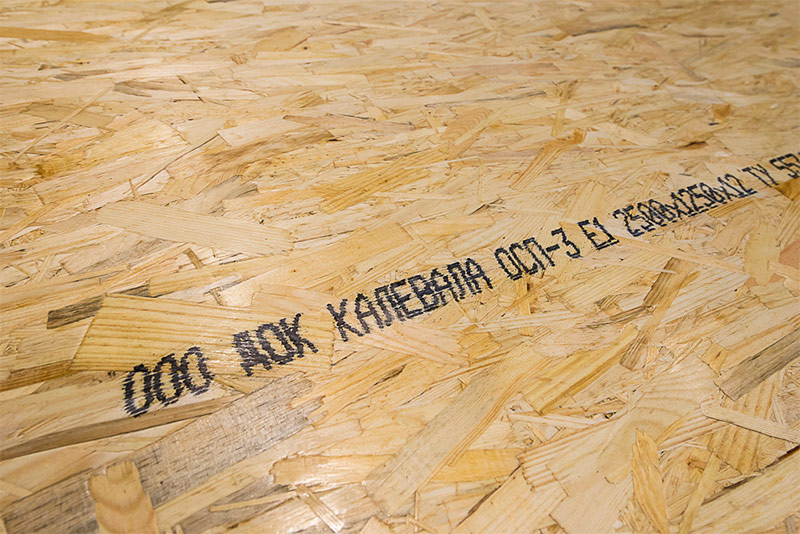
OSB Classification and Brands for Canada and US Standards
Sometimes in Russian outlets you can find OSB manufactured by North American firms. These plates have their own marking, different from European. It is very important not to make a mistake and choose exactly the stove that is suitable for operation in specific conditions.
Canada and the USA have their own chipboard production regulations:
- CSA O325. "Construction cladding"
- PS 2. “Quality standard for wood-based building panels”
According to the bearing properties, the degree of swelling, resistance to loads in conditions of different humidity and a number of other parameters, these two standards coincide. Therefore, many manufacturers produce products that immediately meet two standards.
North American manufacturers to identify OSB grades do not use classes that talk about the characteristics of the board, but markings that indicate the purpose of the material. The buyer can only choose a sheet of the appropriate thickness.
The following OSB markings are found in accordance with CSA O325 standards:
- W - plates for wall cladding;
- 1F - plates for flooring;
- 2F - slabs used as a horizontal flooring, on top of any rough foundation;
- 1R - slabs for arranging a continuous roof lathing without creating support at the edges;
- 2R - sheets for the formation of a continuous roof lath with the arrangement of a support at the edges of the structure.
As a rule, an OSB of the same configuration refers to several brands of chipboards, therefore, in the marking of sheets there are marks of several categories at once, for example, 2F16 / W24 / 1R24. This means that it is allowed to use the material for flooring and roofing, as well as wall cladding. The numbers in the label indicate the maximum permissible distance between the supports of the frame of the structure, taking into account the dimensions of the sheet. This distance is indicated in inches. On the panels of some manufacturers there are lines to indicate the joints of fasteners and racks of the battens.
To understand in what humidity conditions this or that plate can be used, it is necessary to look for special inscriptions in the marking: Interior, Esposure Type Binder, Exterior Bond.
According to American standards, the moisture resistance of OSB can correspond to three classes:
1. Interior. Materials for interior decoration and operation in dry conditions.
2. Esposure Type Binder. Structural boards capable of withstanding moisture. Can be used for outdoor work after treatment with protective coatings. Are applied at humidity less than 19%.
3. Exterior Bond. Sheets suitable for use in conditions of repeated wetting and drying, as well as prolonged exposure to adverse weather or soil. They can be used in environments with absolute humidity over 19%.
The qualitative characteristics of products from different manufacturers, labeled according to EU and US standards, are largely similar. For example, the characteristics of the OSB-2 brand coincide with those of the Interior, OSB-3 with Exposure, and OSB-4 with Exterior. The main difference is the raw materials used to make the boards. European OSB are produced from coniferous wood. American and Canadian producers mainly use poplar.
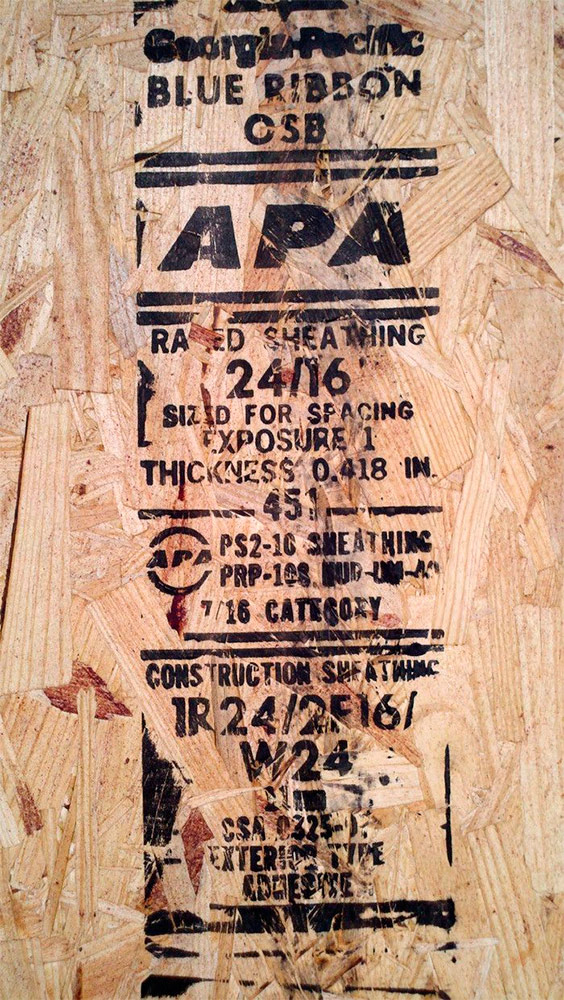
What are the OSB boards depending on the surface finish and the type of edge
Depending on the purpose of the material, the OSB can have different surface finishes and sheet edges.
Unpolished
Raw sheets with a rough surface, providing increased adhesion with bitumen coatings. Such panels are an excellent base for bituminous primers and roofing, which ensured their demand for the formation of a continuous crate of roofs of any area.
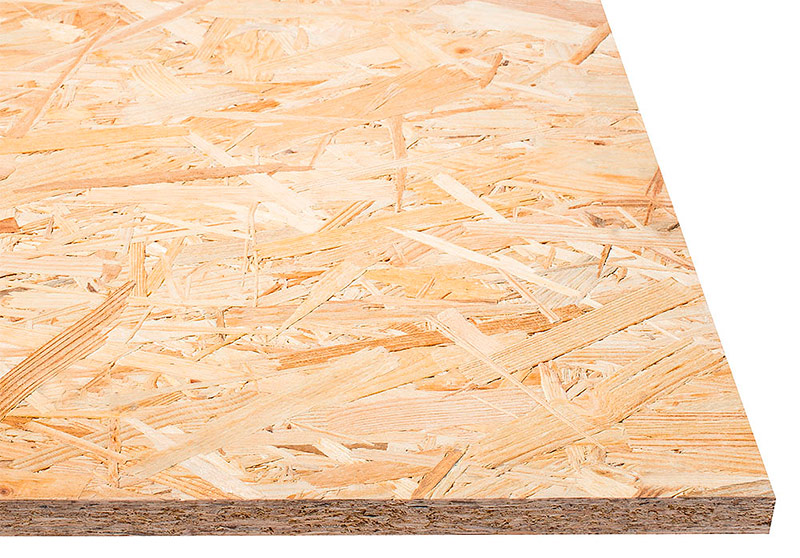
Sanded
Machined sheets intended for the construction of structures with tight tolerances in thickness.
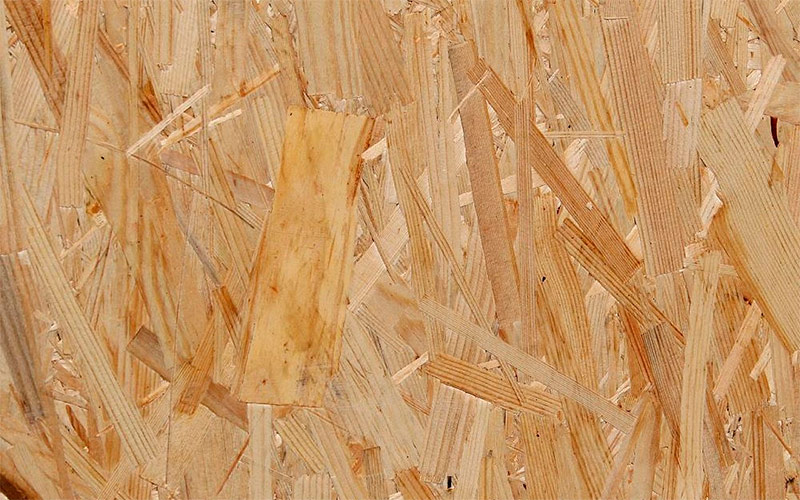
Varnished
Sheets of this type of OSB are coated on one side with liquid or paste-like varnish. LKM is put by means of roller installations or lacquer-grinding machines. This technique allows you to get a plain transparent or embossed patterned coating. Pre-treatment of the base with primer or putty reduces the varnish consumption, as well as pigment the base in accordance with the pursued decorative goals.
Laminated
By lamination is meant the application of impregnated adhesive paper onto the surface of an OSB. As a rule, melamine-containing resins are used for these purposes, which in the process of hot pressing seize with the base and harden to the state of a thermosetting polymer.The excess emulsion is distributed on the surface of the panel with rolling sheets of the press, due to which the outer layer of the sheet acquires the necessary smoothness or relief (embossing).
The edge of the OSB can be straight or curly
Panels with smooth edges are used in rough construction and packaging production.
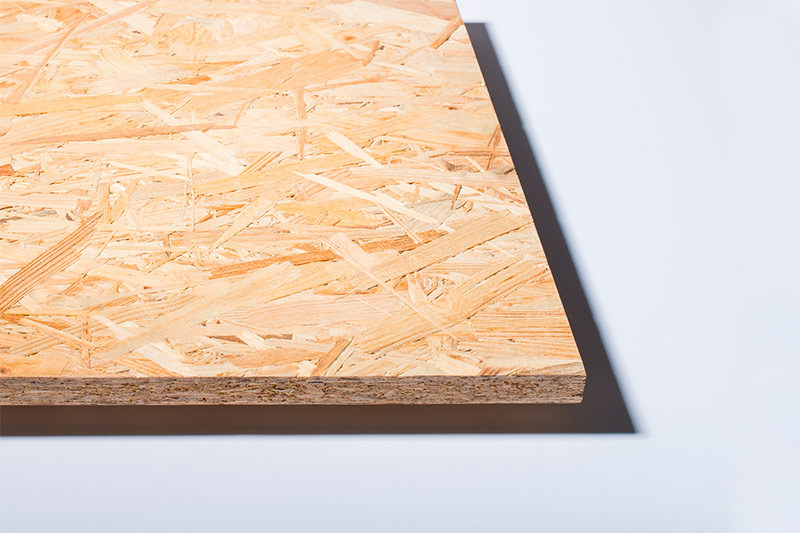
Plates with ends having the shape of a groove-comb connection are in demand in the lining of large-area planes. Such materials provide effective thermal insulation and tight joints at the joints of adjacent sheets.
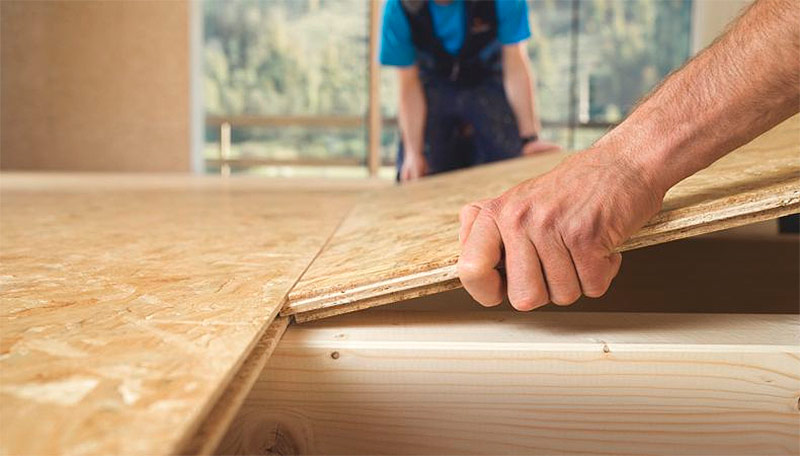
Dimensions OSB boards
The standard dimensions of the OSB sheet are: 1250 × 2500 mm. according to European standards and 1220 × 2440 mm. by North American standards. Sometimes on sale you can find plates with a length of 3000 and 3150 mm. Some manufacturers, on request, produce plates of greater length, up to 7 meters.
When choosing the size of OSB boards, it is best to give preference to larger sheets. By choosing large sheets, you will get fewer joints after installation. This is very important when covering some structures. An example is the wall cladding of a frame house. In this case, it is very important that one slab covers the entire height, from the bottom to the top floor or roof.
The thickness of OSB sheets varies from 6 to 25 mm. The choice of thickness depends on the following factors:
- OSB brands;
- estimated loads;
- distance between supports.
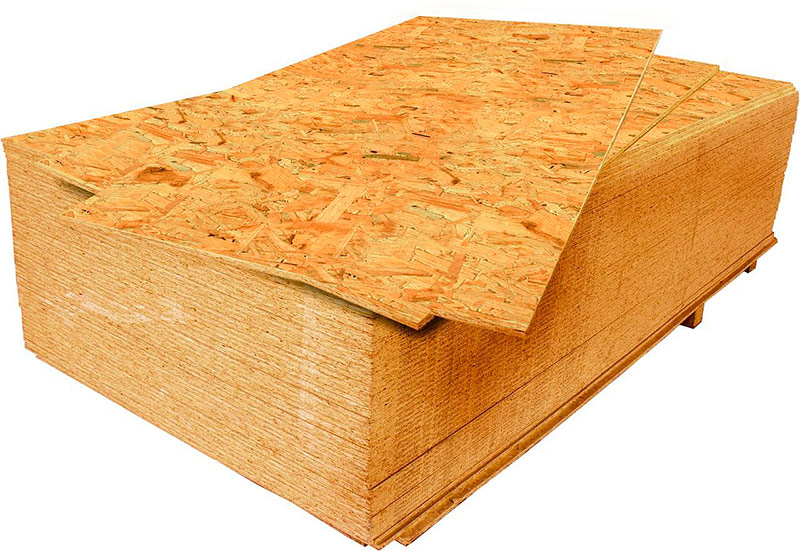
OSB dimensions, weight and sheet area of popular manufacturers
On the domestic market, approximate particle boards are represented by products of Russian and European companies, among which the most recognizable brands are: Kronospan (Belarus, Mogilev), Kalevala Municipal Enterprise (RF, Karelia), GLUNZ (Germany), EGGER (Romania) and Ultralam (r Torzhok, RF).
Kronospan
Kronospan is an Austrian manufacturer of wood materials, having an extensive network of factories around the world, including Belarus. The OSB of the Mogilev enterprise meets European standards, but at the same time it has an affordable price. Excellent operational characteristics and increased moisture resistance have made Kronospan OSB one of the leaders in sales of the Russian building materials market.

| Mark | Sheet dimensions, mm | Sheet area m2 | Sheet weight, kg |
|---|---|---|---|
| OSB-3 | 2500×1250×9 | 3.1 | 17.2 |
| 2500×1250×10 | 19.1 | ||
| 2500×1250×12 | 22.9 | ||
| 2800×1250×12 | 3.5 | 25.6 | |
| 2500×1250×15 | 3.1 | 28.6 | |
| 2500×1250×18 | 34.3 | ||
| 2500×1250×22 | 41.9 | ||
| OSB-4 | 2440×1220×11 | 3 | 20.15 |
| 2500×1250×12 | 3.1 | 23.5 | |
| 2500×1250×15 | 29.4 |
Dok "Kalevala"
DOK "Kalevala" is the largest manufacturer of wood boards in Russia. The company introduced the latest technology, which allowed to establish the release of high-quality and environmentally friendly products that meet the highest safety standards. Owing to these features, OSBs from Kalevala Municipal Health Center have gained popularity not only in the Russian Federation, but also in the CIS countries.

| Mark | Sheet dimensions, mm | Sheet area m2 | Sheet weight, kg |
|---|---|---|---|
| OSB-3 | 2500×1250×8 | 3,1 | 15,5 |
| 2440×1220×9 | 3 | 16,6 | |
| 2500×1250×9 | 3,1 | 17,5 | |
| 2440×1220×12 | 3 | 22,2 | |
| 2500×1200×12 | 22,3 | ||
| 2500×1250×12 | 3,1 | 23,3 | |
| 2800×1250×12 | 3,5 | 26,1 | |
| 2500×1250×15 | 3,1 | 29,1 | |
| 2500×1250×18 | 34,9 | ||
| 2500×1250×22 | 42,6 | ||
| 2440×1220×22 | 3 | 42 | |
| OSB-3 with 2-sided groove crest. | 2500×1250×12 | 3,1 | 23,3 |
| 1250×1250×12 | 1.6 | 11.7 | |
| OSB-3 with a 4-sided groove crest. | 2500×1250×12 | 3,1 | 23,3 |
| OSB-3 Ecohouse | 2500×1250×9 | 17,5 | |
| 2500×1250×12 | 23,3 | ||
| 2800×1250×12 | 3,5 | 26,1 | |
| OSB-3 Ecohouse with a 2-sided groove crest. | 2500×1250×12 | 3,1 | 23,3 |
| OSB-3 Eco-house with 4-sided groove crest. | 2500×1250×12 |
GLUNZ
The German brand GLUNZ, rightfully, is considered the flagship of the industry indicative particle boards. A manufacturer's feature is the use of high-quality timber and environmentally friendly adhesives. The company produces OSB-3 with a formaldehyde emission level of E0. This makes the GLUNZ OSB completely safe.
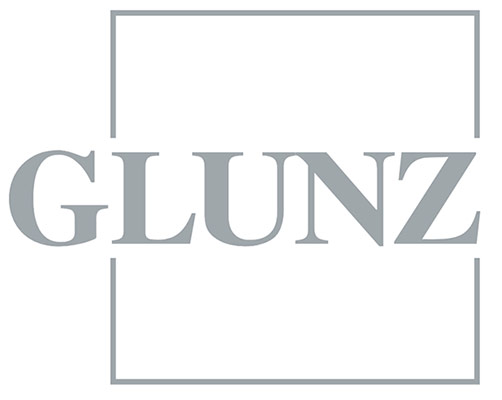
| Mark | Sheet dimensions, mm | Sheet area m2 | Sheet weight, kg |
|---|---|---|---|
| OSB-3 | 2500×1250×6 | 3.1 | 12.2 |
| 2500×1250×9 | 18.3 | ||
| 2800×1250×9 | 3.5 | 21.9 | |
| 2500×1250×12 | 3.1 | 24 | |
| 2800×1250×12 | 3.5 | 28.8 | |
| 2500×1250×15 | 3.1 | 36 | |
| 2500×1250×18 | 54 | ||
| 2500×1250×22 | 24 | ||
| OSB-4 | 2500×1250×9 | 12.2 | |
| 2500×1250×12 | 24 | ||
| 2800×1250×12 | 3.5 | 28.8 | |
| 2500×1250×15 | 3.1 | 36 | |
| 2500×1250×18 | |||
| 2500×1250×22 | 24 | ||
| OSB-3, groove comb | 2800×675×12 | 1.9 | 13 |
| 2500×675×15 | 1.7 | 16.2 | |
| 2500×675×18 | |||
| 2500×675×22 | 23.8 |
Egger
A European brand whose products are considered a reference sample of high quality at an unusually low price. OSB of this brand, produced by a Romanian company, have good density, perfect geometry and low hygroscopicity, which makes them indispensable in the construction and manufacture of furniture. The manufacturer produces plates of environmental standard E1 and E0.

| Mark | Sheet dimensions, mm | Sheet area m2 | Sheet weight, kg |
|---|---|---|---|
| OSB-3 | 2500×1250×6 | 3.1 | 12 |
| 2500×1250×8 | 16 | ||
| 2500×1250×9 | 17.4 | ||
| 2500×1250×12 | 23.3 | ||
| 2500×1250×12 | 3.5 | 26 | |
| 2500×1250×15 | 3.1 | 28.1 | |
| 2500×1250×18 | 32.8 | ||
| 2500×1250×22 | 42.8 |
Ultralam
If you need an affordable and reliable OSB board, the dimensions of which will satisfy the needs of any construction, pay attention to the Ultralam products of the Russian manufacturer Taleon Terra, whose production facilities are located in the town of Torozok, Tver Region. This is one of the most technologically advanced and modern plants not only on the scale of the Russian Federation, but also the EU. Plate production is carried out by continuous pressing.Plates have an ideal geometry and high density (from 620 kg / m3), which is especially appreciated in the construction of frame houses and the manufacture of SIP panels.

| Mark | Sheet dimensions, mm | Sheet area m2 | Sheet weight, kg |
|---|---|---|---|
| OSB-3 groove comb |
2485×610×15 | 1.5 | 44 |
| 2440×610×18 | 36 | ||
| 2485×610×18 | |||
| 2485×610×22 | 28 | ||
| OSB-3 | 2500×1250×6 | 3.1 | 106 |
| 2500×1250×8 | 80 | ||
| 2440×1220×9 | 3 | 72 | |
| 2500×1250×9 | 3.1 | ||
| 2500×1250×11 | 60 | ||
| 2500×1250×12 | 56 | ||
| 2800×1250×12 | 3.5 | ||
| 2500×1250×15 | 3.1 | 44 | |
| 2500×1250×18 | 36 | ||
| 2500×1250×22 | 28 |

